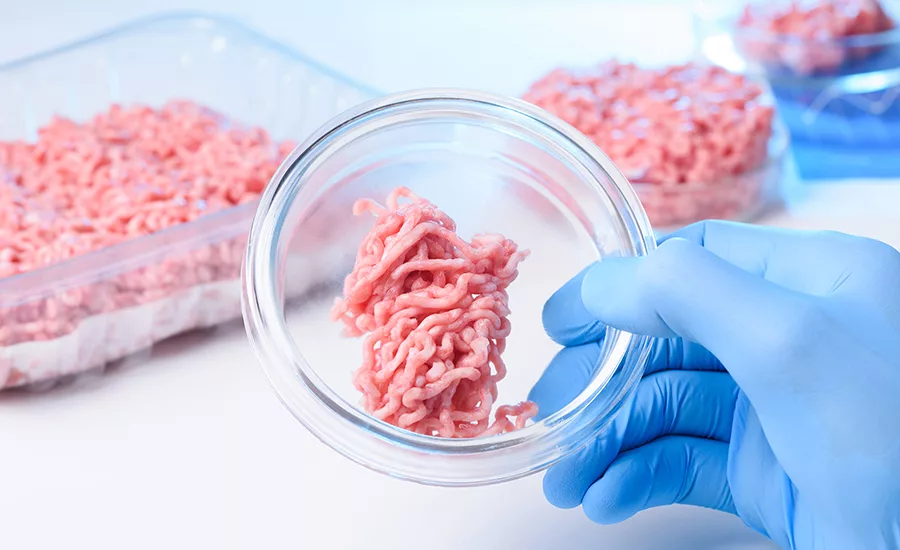The Role of Sampling in Quality Management
How smart sampling can be an effective element in a food safety program.

Much of the microbiological and quality testing done by the food industry is conducted to meet customer demands. Photo courtesy of Getty Images/nevodka
One of the saddest things that one hears from consumer groups is complaints that food processors do not do enough sampling. This was one of the early issues when the U.S. food industry adopted HACCP. Many people did not grasp the concept of process control; or in other words, building quality and safety into the process. A company cannot test safety or quality into a product. It must be part of their process. This applies to microbiological concerns, quality parameters and sensory issues.
Much of the microbiological and quality testing done by the food industry is conducted to meet customer demands. This is especially true with products that are deemed high risk. Examples of such products are meat, dairy and almost any product containing protein, plus any product that does not incorporate a kill step in the process. More buyers are demanding that processors provide them with a Certificate of Analysis (COA). The COA will usually include microbiological results, chemical tests, physical tests and even sensory.
Physical tests are included because there are more buyers demanding that their suppliers utilize metal detectors, magnets, x-ray machines and screens to ensure that physical hazards are controlled. Now, these are process controls, but the buyer expects to see something in the COA that references these controls. Again, the tests that are done depend upon the product and how it is processed. Processors manufacturing products with a validated “kill step” may not test for pathogens, whereas the processor that relies on supplier controls will almost always test finished products for pathogens and indicator organisms.
One of the biggest issues when one looks at sampling for safety or quality, including sensory parameters, is line speed. There are many items such as carbonated soft drinks, beverages and snack items where line speeds are very fast. When sampling product for quality, safety or sensory issues, the percentage of product that is actually tested may be extremely low; oftentimes as low as 0.1%. That is really not statistically significant. Much of the in-process sampling and testing that is done could, in reality, be called a verification activity. Again, ensure that the process is designed so that quality, safety and sensory parameters are being met.
There are some processes or unit operations in which sampling is an integral part of the food quality and safety program, and one is batching. There are many different products that are batched as part of the process. These include (but are not limited to) beverages, sauces, condiments, dipping sauces, and syrups. These products may include items that fall under the acidified foods regulation (21 CFR Part 114) or rely on low water activity to ensure safety. For example, if a sauce is deemed an acidified food, the batch will be tested to ensure that the pH is 4.6 or below. And, given that overall lethality is pH dependent, that pH may be lower.
The company may also run tests for brix, viscosity and sensory testing. If the batch meets the established parameters, it will be approved and pumped forward for processing and filling. If the batch does not meet one or more parameters, it will be adjusted to ensure that it meets the defined quality and safety parameters. If the product cannot be adjusted to meet the safety and quality parameters, it will be disposed of. In today’s world where sustainability and the environment have become an integral element of how processors do business, the product may require some adjustments before it is dumped. As an example, an acidic product may be neutralized to pH 7.0 or thereabouts.
One of the biggest issues when one looks at sampling for safety or quality, including sensory parameters, is line speed.
Sampling and Food Safety
Since HACCP or Preventive Controls are required for almost all food processors, sampling and testing serves as a verification activity. The processor could test finished product to ensure it meets safety requirements, confirming that the process controls were effective. It has already been mentioned that many buyers mandate that their suppliers provide them with COAs. If the suppliers do so, processors should make sure that they turn the testing into a verification activity. The data should be loaded into a database to build a history on the product. There are processors that have been asked to conduct finished products, built the databases and then shared these results with clients. After a review of the data, there have been instances when the buyer eliminated the requirement for finished product testing.
Another verification activity that requires sampling is on incoming materials that may be deemed high risk. Processors will mandate that the supplier provide a COA, especially for ingredients deemed high risk. The FDA’s “Hazard Analysis and Risk-Based Preventive Controls for Human Food: Draft Guidance for Industry” is an excellent document for processors to evaluate potential risk in foods and ingredients. There are processors that will place ingredients deemed high risk on hold upon receipt and do their own sampling and testing to verify that the COA is accurate. This is commonly done with potential biological hazards, but there are companies that will sample and test for potential chemical hazards such mycotoxins.
So, should sampling and testing be part of your food quality and safety program? It depends upon a number of factors such as the type of product or ingredient, customer demands, the type of process and others. Those who batch process build programs where batches are tested and approved before being processed. Most processors test finished product, but one cannot test quality or safety into a finished product. That is a function of the process and the process controls that the company has developed and implemented.
Looking for a reprint of this article?
From high-res PDFs to custom plaques, order your copy today!






